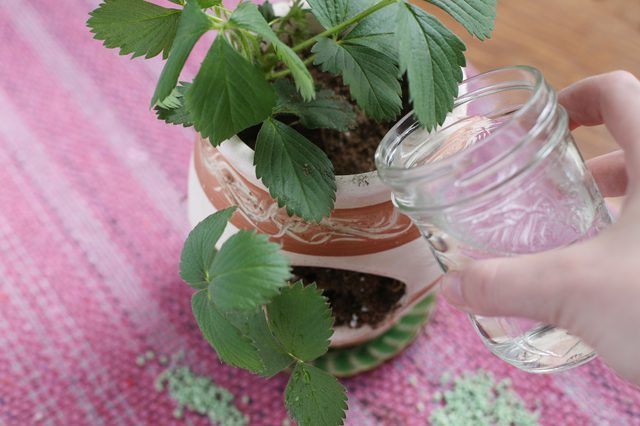Bulbs
Flower Basics
Flower Beds & Specialty Gardens
Flower Garden
Garden Furniture
Garden Gnomes
Garden Seeds
Garden Sheds
Garden Statues
Garden Tools & Supplies
Gardening Basics
Green & Organic
Groundcovers & Vines
Growing Annuals
Growing Basil
Growing Beans
Growing Berries
Growing Blueberries
Growing Cactus
Growing Corn
Growing Cotton
Growing Edibles
Growing Flowers
Growing Garlic
Growing Grapes
Growing Grass
Growing Herbs
Growing Jasmine
Growing Mint
Growing Mushrooms
Orchids
Growing Peanuts
Growing Perennials
Growing Plants
Growing Rosemary
Growing Roses
Growing Strawberries
Growing Sunflowers
Growing Thyme
Growing Tomatoes
Growing Tulips
Growing Vegetables
Herb Basics
Herb Garden
Indoor Growing
Landscaping Basics
Landscaping Patios
Landscaping Plants
Landscaping Shrubs
Landscaping Trees
Landscaping Walks & Pathways
Lawn Basics
Lawn Maintenance
Lawn Mowers
Lawn Ornaments
Lawn Planting
Lawn Tools
Outdoor Growing
Overall Landscape Planning
Pests, Weeds & Problems
Plant Basics
Rock Garden
Rose Garden
Shrubs
Soil
Specialty Gardens
Trees
Vegetable Garden
Yard Maintenance
How to Plant Bare-Root Strawberries
How to Plant Bare-Root Strawberries. Ideal for beginning gardeners across U.S. Department of Agriculture plant hardiness zones 2 through 11, different strawberry varieties (Fragaria spp.) yield abundant fruit with a minimum of care. For the most economical harvest, plant dormant bare-root strawberries. Whether they’re destined for a garden...
Ideal for beginning gardeners across U.S. Department of Agriculture plant hardiness zones 2 through 11, different strawberry varieties (Fragaria spp.) yield abundant fruit with a minimum of care. For the most economical harvest, plant dormant bare-root strawberries. Whether they’re destined for a garden plot or a patio strawberry jar, avoid packaged plants. Buy nursery strawberries you can inspect beforehand for dense, firm roots right before you plant them.
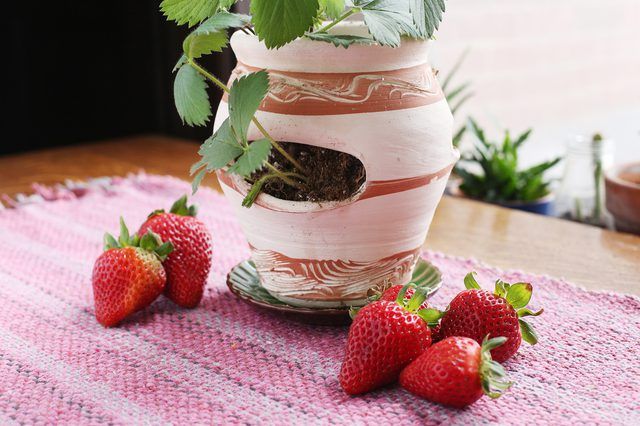
Strawberries produce the most fruit when they get six or more hours of daily sun and are planted in organically rich, loose well draining soil. A month before your spring -- or, in a mild-winter climate, fall -- planting date, work a 1-inch layer of composted horse or steer manure into the garden bed's top 6 to 8 inches. Amending the soil improves its organic content and its drainage. If your soil is heavy clay, mound it into a raised bed before planting.
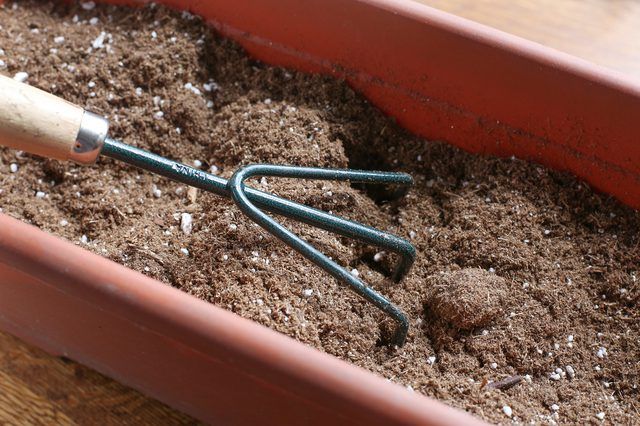
Just before planting, soak the strawberry roots in water for 20 minutes. Spread the roots of the first plant, and dig a hole two to three times their width. Make it deep enough that the plant's crown, where the roots and stems join, is slightly higher than the soil line. With its roots still spread, center the plant in the hole and replace the soil. Space additional planting holes 1 to 1 1/2 feet apart, and then plant the remaining strawberries and water well.
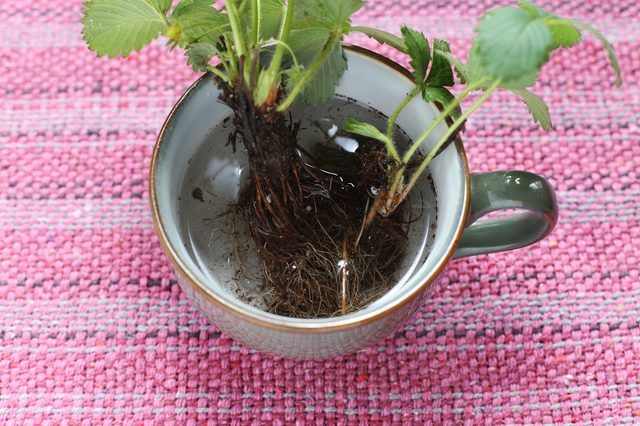
Newly planted garden strawberries benefit from fertilizing with slow-acting fish emulsion fertilizer. Give each plant 1 cup of a solution containing 1/2 tablespoon, or one-half the label's recommended amount, of the emulsion mixed in 1 gallon of water. If you don't see new growth within three weeks, feed the plants again. Mulch them with a 1 1/2- to 2-inch layer of salt hay made from dried salt marsh grass, if you can find it. Otherwise, mulch with straw.
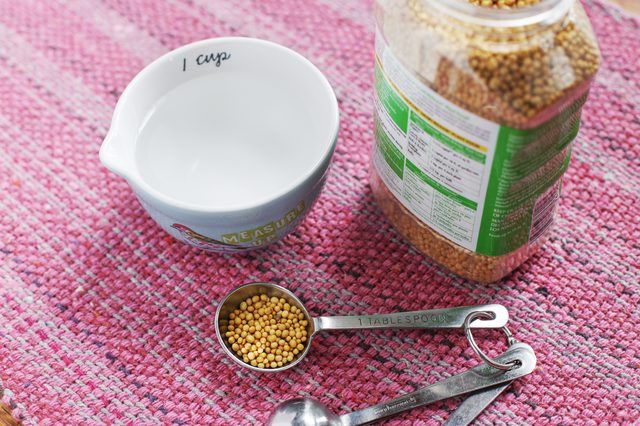
Strawberries' trailing habit makes them naturals for hanging baskets or the pocketed plastic or terracotta urns known as strawberry jars. To prevent them from drawing moisture away from the plants, immerse terracotta jars in water for one hour before planting. For hanging baskets, use three evenly spaced plants. Strawberry jars should get one plant per pocket, and no more than three to fill in the tops. Before planting, soak the berry roots in water for 20 minutes.
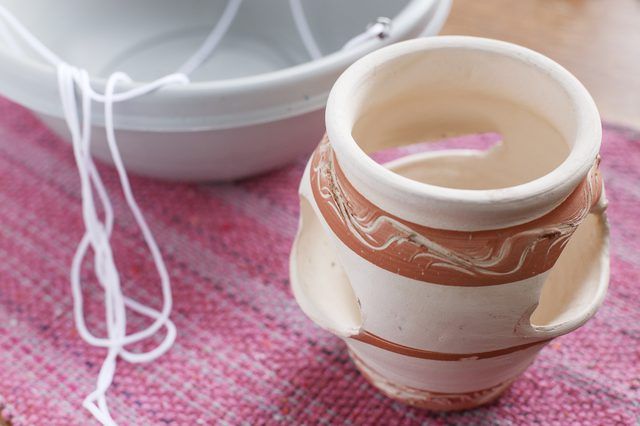
Pour high-quality potting soil in a bucket, and slowly add water and stir until it's evenly moist. Fill your jar's lower three pockets with the moistened soil, or your hanging basket to within 1/2 inch of its rim. Set one strawberry plant in each pocket, pulling its roots inward gently until its crown is level with the pocket's rim. Repeat for each set of pockets, and then fill the jar to within 1 or 2 inches of its top and plant the remaining strawberries. Set the hanging basket's plants in their holes with the crowns at soil level and firm them in place. Water your container well.
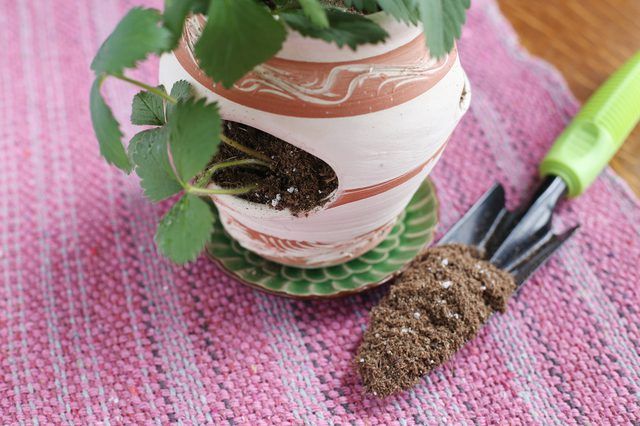
Let the container plants rest in the shade for three or four days, and then increase their sun exposure by one hour daily for a week before moving them to their permanent spot. Water when the top 1 inch of soil is dry to the touch. Beginning two weeks after planting, fertilize every two weeks with the half-strength fish emulsion mixture. In cold-winter climates, stop fertilizing at the end of August so the plants don't produce frost-tender new growth before entering dormancy.
